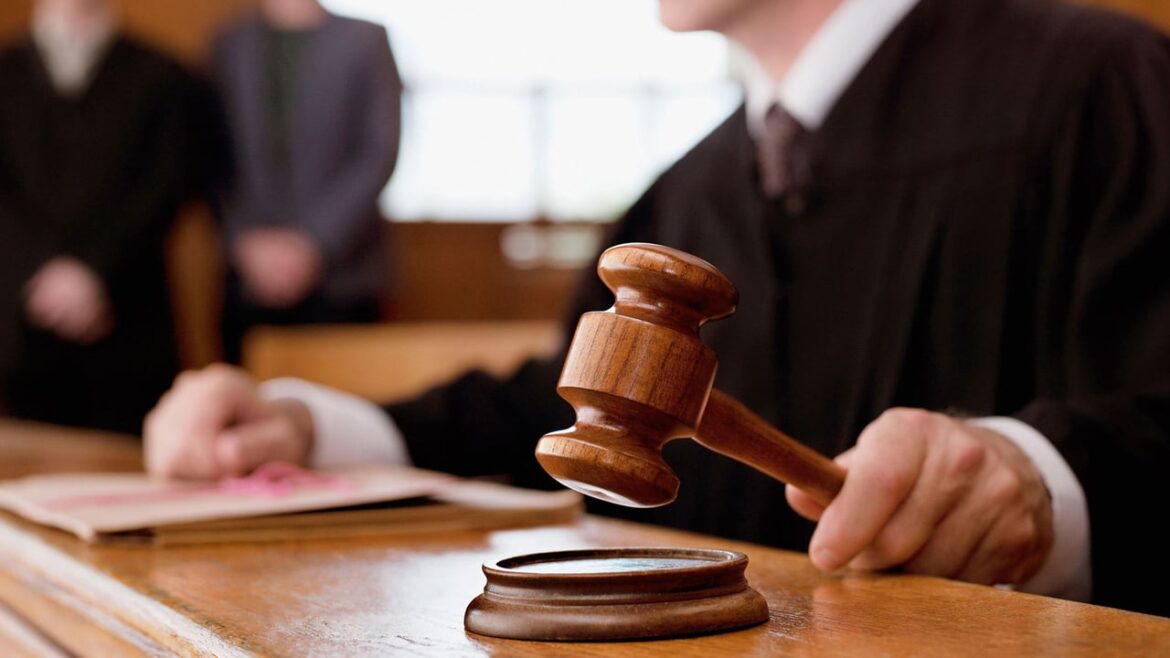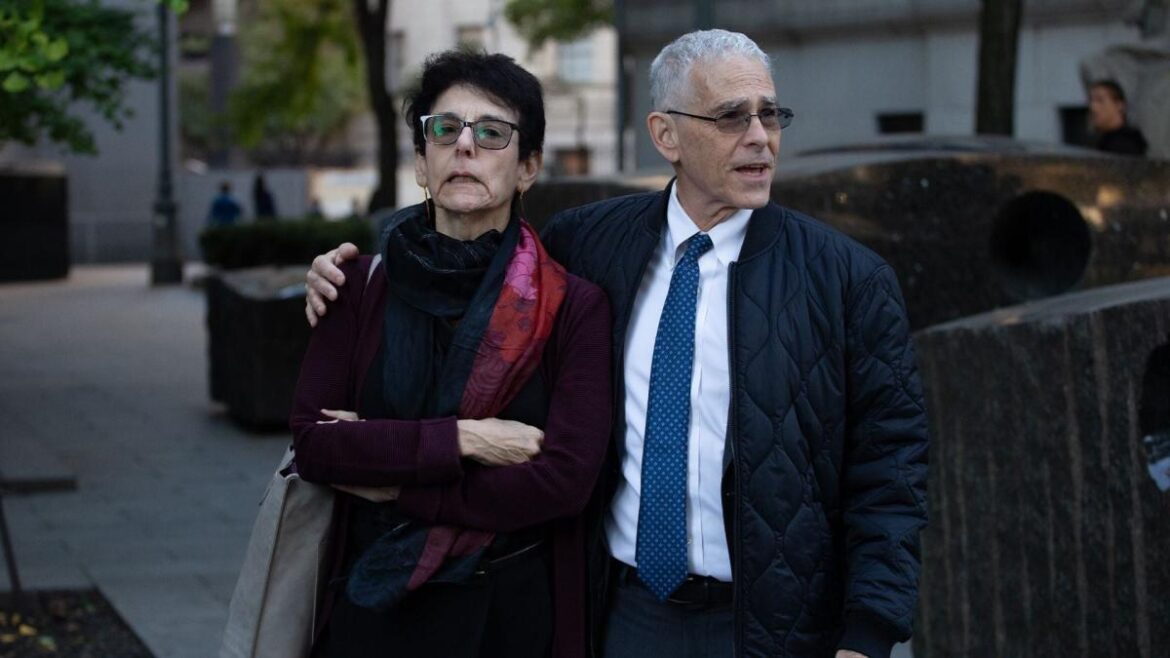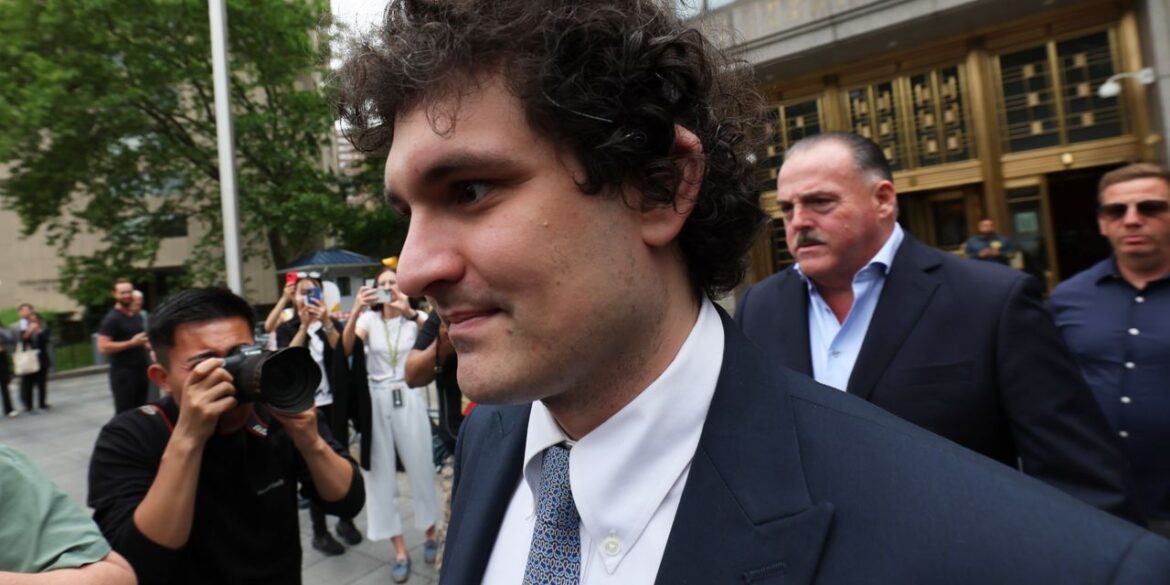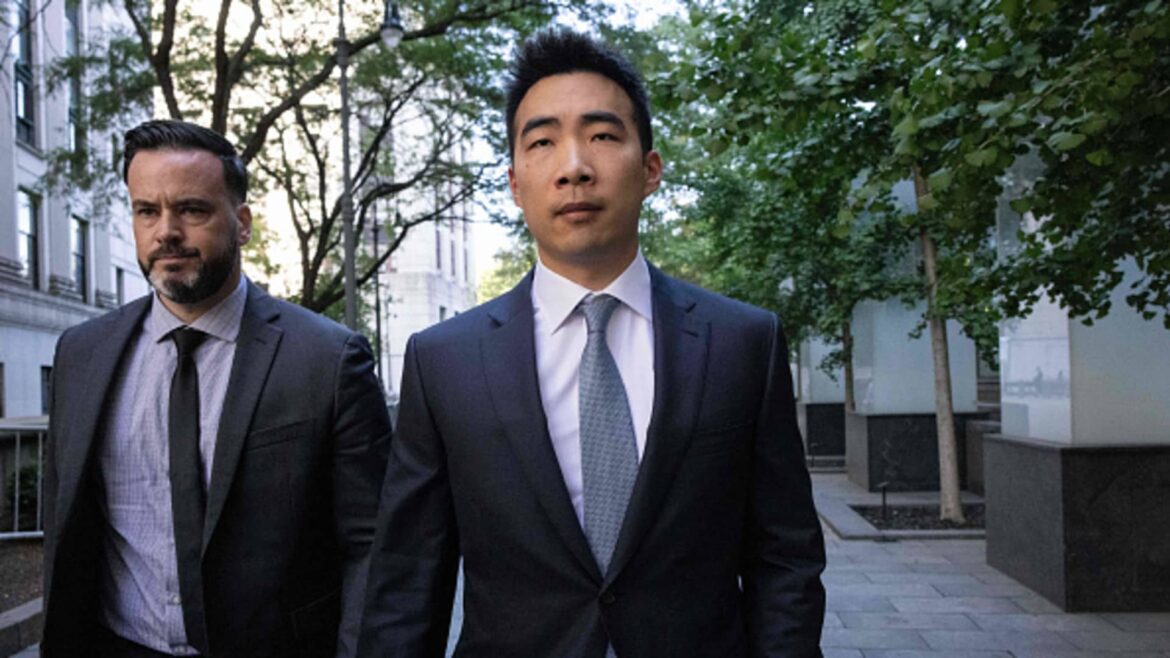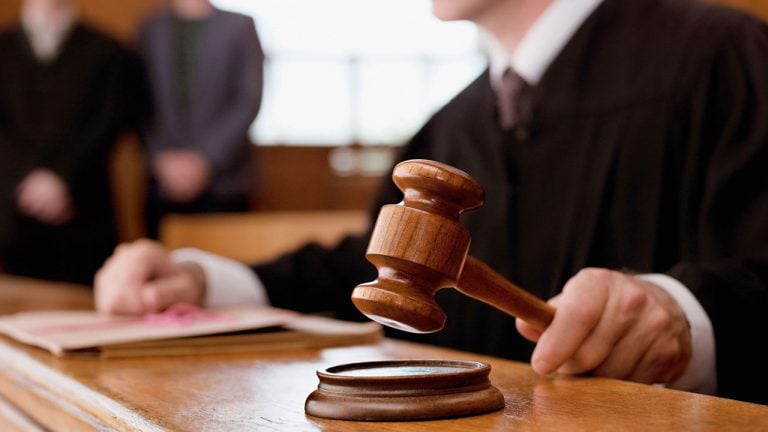 A recent research paper on SSRN by legal scholars scrutinizes the ethical quandaries and potential conflicts of interest surrounding Sullivan & Cromwell LLP’s involvement in FTX’s Chapter 11 bankruptcy filing. Study Highlights Legal Ethics From FTX Bankruptcy Proceedings The SSRN research paper entitled “Conflicting Public and Private Interests in Chapter 11” meticulously explores the controversial […]
A recent research paper on SSRN by legal scholars scrutinizes the ethical quandaries and potential conflicts of interest surrounding Sullivan & Cromwell LLP’s involvement in FTX’s Chapter 11 bankruptcy filing. Study Highlights Legal Ethics From FTX Bankruptcy Proceedings The SSRN research paper entitled “Conflicting Public and Private Interests in Chapter 11” meticulously explores the controversial […]
Source link
FTXs
Sam Bankman-Fried’s Parents Ask Court to Dismiss FTX’s Lawsuit Seeking to Recover Funds
Joseph Bankman and Barbara Fried, the parents of Sam Bankman-Fried, have asked a court to dismiss a lawsuit by the bankrupt cryptocurrency exchange FTX seeking to recover funds it alleges were fraudulently transferred.
FTX sought to “recover millions of dollars” from Bankman and Fried in September 2023. Less than two months later, their son, Bankman-Fried, was found guilty on all seven charges of defrauding customers and the United States. His sentencing is expected in March.
Bankman and Fried, both professors at Stanford Law School, argued that Bankman did not have a fiduciary relationship with FTX and did not serve “as a director, officer, or manager,” and even if a fiduciary relationship existed with FTX to plausibly allege a breach, according to a Jan. 15 court filing.
Significantly, the court filing argued that it is not enough for FTX to plead that the parents “knew or should have known.” Instead, the filing argued that FTX should have produced specific facts showing “actual knowledge” that the parents “knew certain actions would result in a breach of fiduciary duty.”
In the September 2023 lawsuit filing, FTX did not state the total amount Bankman and Fried may have misappropriated, but it did provide certain line items: Bankman received an annual salary of $200,000 for his role as a senior adviser to the FTX foundation, more than $18 million for the property in the Bahamas and $5.5 million in FTX Group donations to Stanford University, which the university has said will be returned.
FTX’s FTT Token Leads Market Gains With 55% Rally, What’s Driving It?
The utility token of the defunct crypto exchange FTX, FTT is one of the top gainers in the last few days, rising 55% in just 48 hours alone. This has led to speculations as to what may be driving the token’s rally. One of them relates to a recent event in the crypto industry.
FTT Token’s Recent Rally Propelled By Binance News
In a post on its X (formerly Twitter) platform, the market intelligence platform Santiment noted that the second rally for FTT came after the Binance news. The world’s largest crypto exchange and its former CEO Changpeng “CZ” Zhao had both pleaded to criminal charges and agreed to a settlement of over $4 billion in fines.
As to the correlation between both events, Binance and FTX have always been closely knitted in several regards. For one, CZ, in particular, has sometimes been credited for being responsible for FTX’s collapse. Prior to the bank run on FTX, the former executive had made a tweet about his company liquidating their FTT holdings.
As such, it is believed that Binance, going through this difficult phase, comes off as bullish for the FTT token because of the animosity that the FTX and Binance ecosystem share. Interestingly, while FTT has continued to rally, Binance’s BNB has suffered an inverse fate. BNB is down by over 6% in the last seven days, according to data from CoinMarketCap.
Sam Bankman-Fried’s Conviction Also Contributed
It is worth mentioning that the FTT rally didn’t just kickstart on the back of the Binance news. FTT’s market value is reported to be about 255% up against Bitcoin in the past 3 weeks. This resurgence began just after the 10 largest wallets began accumulating, with $12.8 million worth of FTT bought by these whales since November 3.
Interestingly, November 3 happens to be a day after FTX’s former CEO Sam Bankman-Fried (SBF), was convicted. The FTX founder was convicted of all seven charges leveled against him. Going by this, it would seem that his conviction was conceived as bullish for these whales who decided to double down on their FTT holdings.
Another factor that might also be contributing to the token’s resurgence is the talks about FTX making a comeback. The defunct crypto exchange is reported to have suitors who are interested in rebooting it. The Chair of the Securities and Exchange Commission (SEC), Gary Gensler, had also noted that it was a possibility as far as the rules and guidelines are abided by.
At the time of writing, FTT is currently trading at around $4.50, up over 21% in the last 24 hours and up by over 336% in the past month, according to data from CoinMarketCap.
FTT tops list of gainers | Source: FTTUSDT on Tradingview.com
Featured image from IQ.Wiki, chart from Tradingview.com
Bankman-Fried says he was unaware of FTX’s missing $8B until just before collapse
FTX founder Sam Bankman-Fried insisted Tuesday that he was unaware that $8 billion of customer money had disappeared until just before his crypto exchange collapsed.
As both the prosecution and defense rested in the criminal fraud case against him in federal court in Manhattan. Bankman-Fried said he had long stepped away from day-to-day decision-making at FTX’s sister firm Alameda Research which is accused of squandering the missing money on risky investments.
“In retrospect, our oversight of that was very poor,” he said in his third and final day of testimony before the jury. “I deeply regret not taking a deeper look into it.”
FTX ultimately collapsed in late 2022, largely as a result of the billions in loans it had extended to Alameda, which prosecutors alleged was siphoned from customer accounts. Earlier Bankman-Fried and others had testified how borrowing limits placed on FTX customers had been lifted for Alameda, allowing it to fall into a deep hole.
Federal prosecutors have alleged that Alameda was effectively granted carte blanche to use FTX customer money to make risky bets and that customer money was used to finance luxury real estate purchases, private jets, investments and political contributions.
Both sides are expected to present their closing arguments on Wednesday and the jury could begin deliberating on Thursday.
Bankman-Fried made the risky decision to take the stand after weeks of damning testimony from several former FTX and Alameda executives who had pleaded guilty in the case and had agreed to testify against him.
Through much of his testimony, Bankman-Fried said he couldn’t recall details of many public statements he had made to the media and elsewhere, but stood firm that he had been out of the loop on how big of a hole had formed on FTX’s balance sheet and how much money Alameda had been allowed to borrow.
Prosecutor Danielle Sassoon peppered Bankman-Fried for hours over two days about discrepancies between his prior public statements and what he testified, in an effort to damage his credibility with the jury.
Witness Adam Yedidia answers questions during Sam Bankman-Fried fraud trial over the collapse of FTX, the bankrupt cryptocurrency exchange, at Federal Court in New York City, October 5, 2023, in this courtroom sketch.
Jane Rosenberg | Reuters
Two of Sam Bankman-Fried’s former friends from MIT, who also worked at crypto exchange FTX while living with the company’s founder in the Bahamas, took the stand in a Manhattan courtroom this week to testify against their former classmate, confidant, and boss — a man who allegedly ran a crypto empire that defrauded thousands of customers out of billions of dollars.
Gary Wang, the lesser-known co-founder of FTX, was asked by Assistant U.S. Attorney Nicolas Roos on Thursday, “Did you commit financial crimes while working at FTX?”
“Yes,” responded Wang. He said that his crimes, including wire and commodities fraud, were carried out with the help of Bankman-Fried, FTX ex-engineering head Nishad Singh and Caroline Ellison, who ran sister hedge fund Alameda Research and had been Bankman-Fried’s girlfriend.
“Mr. Wang, do you see any of the people you committed those crimes with in the courtroom today?” Roos continued.
Wang, dressed in an oversized and wrinkled suit with a red tie and glasses, awkwardly stood up and looked around the courtroom before responding, “Yes.”
“Who do you see?” asked Roos.
“Sam Bankman-Fried,” he said.
The trial, set to last six weeks, will resume on Tuesday with key testimony expected from Ellison, who is considered the prosecution’s star witness, having already pleaded guilty to multiple charges. Bankman-Fried faces seven federal charges, including wire fraud, securities fraud and money laundering, that could put him in prison for the rest of his life.
Thus far, Bankman-Fried, 31, has remained mostly quiet in court intently listening to witnesses and at times writing notes to his attorneys. But as Wang testified against him, Bankman-Fried looked visibly upset, shifting his gaze from his former friend to the ground, and at one point putting his head in his hands.
Sam Bankman-Fried listens as Assistant U.S. Attorney Nicolas Roos questions Gary Wang during Bankman-Fried’s fraud trial over the collapse of FTX, the bankrupt cryptocurrency exchange, at Federal Court in New York City, U.S., October 6, 2023, in this courtroom sketch.
Jane Rosenberg | Reuters
Wang, 30, was technology chief for FTX, which spiraled into bankruptcy in November. He spoke so fast that U.S. District Judge Lewis Kaplan and the prosecutor both stopped him at points to ask that he slow his pace.
Much of Wang’s testimony on Friday focused on the final days at FTX before the entire operation imploded, including reports in the media detailing Alameda’s business practices and its troubling ties to FTX.
Wang said that in response to the reporting an emergency meeting was called between Bankman-Fried, Wang and Singh, to discuss shutting down Alameda. He said they ultimately decided against such a move, because he and Bankman-Fried were aware that Alameda had no way to repay the roughly $14 billion hole in its books.
Prosecutors took the jury through a series of tweets, beginning on Nov. 7. Posts came from the company blaming bank hours for slow withdrawals, while Bankman-Fried tweeted from his personal account, assuring customers that all was fine.
“FTX was not fine and assets were not fine,” Wang testified.
On Nov. 12, after FTX declared bankruptcy, Bankman-Fried asked Wang to drive with him to the Bahamas Securities Commission for a meeting. On the drive, Bankman-Fried told Wang to transfer assets to Bahamian liquidators because he believed they would allow him to maintain control of the company. Wang said he wasn’t in the meeting with the securities authority, though Bankman-Fried’s dad was present.
Wang said he returned to the U.S. and met with prosecutors the next day. He faces up to 50 years in prison when he faces a judge for sentencing following this trial. He told jurors he signed a six-page cooperation agreement that requires him to meet with prosecutors, answer their questions truthfully and turn over evidence.
Sam Bankman-Fried, the founder of bankrupt cryptocurrency exchange FTX, is seen during a hearing as a U.S judge revoked his bail, at a courthouse in New York, U.S., August 11, 2023 in this courtroom sketch.
Jane Rosenberg | Reuters
$65 billion line of credit
For months, Bankman-Fried has known that Wang and Ellison, who were integral members of his personal and professional inner circles, had turned on him. Both pleaded guilty in December and have since been cooperating with the U.S. attorney’s office in Manhattan.
Wang’s testimony, which stretched into Friday, was given under a cooperation agreement with the government. Ellison is expected to take the stand under a similar arrangement.
U.S. District Judge Lewis Kaplan presides as Gary Wang testifies during the fraud trial of Sam Bankman-Fried over the collapse of FTX, the bankrupt cryptocurrency exchange, at Federal Court in New York City, U.S., October 6, 2023 in this courtroom sketch.
Jane Rosenberg | Reuters
Born in China, Wang moved to the U.S. at age 7, and grew up in Minnesota before going to the Massachusetts Institute of Technology to study math and computer science. He worked at Google after college.
Wang, who first met Bankman-Fried during high school at a summer camp, owned 10% of Alameda, while his boss owned the other 90%. Wang told the court about the advantages that Alameda received by having code baked into FTX’s software that allowed special access to the crypto exchange. Those privileges ultimately resulted in Alameda owing FTX $8 billion worth of customer deposits.
“We gave special privileges on FTX that gave unlimited withdrawals on the platform to Alameda,” Wang said. Alameda was allowed to withdraw and transfer those funds and had a $65 billion line of credit.
“When customers deposited USD, it went to Alameda,” he said. “It existed in the computer code. Alameda could have negative balances and unlimited withdrawals.”
That “bug” in the code was written by Nishad Singh, who was FTX’s director of engineering, and reviewed by Wang. Bankman-Fried was calling the shots, Wang said.
Wang also told the court about a $1 million personal loan he received and a $200 million to $300 million loan in his name from Alameda that was never deposited into his account, but rather was used to make investments into other companies on behalf of FTX. That was all done by Bankman-Fried, he testified.
In early 2020, Wang said he discovered for the first time Alameda’s negative balance exceeded FTX’s revenue, an indication that Alameda was taking customer funds. Wang said he brought this to Bankman-Fried’s attention several times.
In late 2021, Wang discovered Alameda had withdrawn $3 billion from its $65 billion line of credit.
Wang’s compensation was a base salary of $200,000 per year plus stock. He owned roughly 17% of FTX.
Even though they were co-founders, “ultimately it was Sam’s decision to make” when there were disagreements, he said.
Assistant United States Attorney Nicolas Roos questions Gary Wang during Sam Bankman-Fried’s fraud trial over the collapse of FTX, the bankrupt cryptocurrency exchange, at Federal Court in New York City, U.S., October 6, 2023, in this courtroom sketch.
Jane Rosenberg | Reuters
An $8 billion bug
Adam Yedidia, who was the prosecution’s second witness on Wednesday, continued his testimony on Thursday. Yedidia met Bankman-Fried in college at MIT, and the pair remained close friends.
Yedidia, assuming a robotic posture on the stand, worked out of FTX’s Hong Kong office from January to October of 2021 and then in the Bahamas until last year’s collapse. In his testimony, he referred to a group Signal thread called “People of the House,” referring to Bankman-Fried’s $35 million penthouse, where many employees lived.
Exhibit from the prosecution shows Signal thread called “People of the House,” referring to Bankman-Fried’s $35 million penthouse, where many employees lived.
Source: SDNY
In terms of who was paying the rent, Yedidia recalled Bankman-Fried saying he “assumed it’s just Alameda paying for it in the end.”
Yedidia said Bankman-Fried had told him, before he began working in the Bahamas in 2019, that he and Ellison had sex. Bankman-Fried asked Yedidia if it was a good idea for them to date, to which Yedidia said no. Bankman-Fried responded by saying he was expecting that answer.
One of Yedidia’s responsibilities was fixing the bug in the code that gave Alameda preferential treatment. In June 2022, he submitted a report to Bankman-Fried on Signal that showed $8 billion in customer money held in an internal database tracking the cash wired to an Alameda account called “fiat at ftx.com” was missing.
Yedidia said he and Bankman-Fried spoke about it at the pickleball court at the resort in Nassau, Bahamas. He asked his boss if things were OK. He was concerned because it “seemed like a lot of money” from FTX customers was at risk.
“Sam said, we were bulletproof last year. We aren’t bulletproof this year,” Yedidia testified.
Yedidia said he asked when they would be bulletproof again.
Bankman-Fried said he wasn’t sure, but it may be six months to three years. Yedidia said Bankman-Fried appeared “worried or nervous,” which he said was atypical. Still, Yedidia said he trusted Bankman-Fried and Ellison to “handle the situation.”
On cross-examination, Christian Everdell, Bankman-Fried’s attorney, focused on how Yedidia was the one responsible for developing and reviewing the code.
He asked about the long hours employees worked and Yedidia’s concern for Wang being near burnout. That resulted in Yedidia instituting a rule to not wake Wang at night for bug fixes because he needed sleep.
Everdell also drilled Yedidia on his high level of compensation in his less than two years at FTX. His base salary was between $175,000 and $200,000, but he received multiple bonuses of more than $12 million in cash and company equity.
Yedidia said he’s now teaching math — geometry and algebra — at a high school. He invested most of the millions he earned as bonuses back into FTX, and his equity stake is now worthless.
As FTX was failing, Yedidia said he was by Bankman-Fried’s side. He highlighted a Signal exchange in November 2022, during which he wrote, “I love you Sam. I’m not going anywhere.” He said he wrote the message because so many people had left.
When asked what changed, Yedidia said he learned that FTX customer deposits had been used to pay loans to creditors. He said Alameda’s actions seemed “flagrantly wrong.”
Yedidia’s testimony ended on a fiery note, which was later struck from the record. He was asked why he had lost faith in FTX and resigned.
“FTX defrauded all its customers,” he said.
Matt Huang, co-founder of Paradigm Operations LP, right, arrives at court in New York, US, on Thursday, Oct. 5, 2023. Former FTX Co-Founder Sam Bankman-Fried is charged with seven counts of fraud and money laundering following the collapse of his cryptocurrency empire last year. Photographer: Yuki Iwamura/Bloomberg via Getty Images
Yuki Iwamura | Bloomberg | Getty Images
Investment to zero
The third witness to take the stand was Matt Huang, co-founder and managing partner of Paradigm, a crypto venture capital firm that invested over $275 million in FTX. That stake was wiped out.
Huang testified about his firm’s due diligence on FTX, and he told the court that Bankman-Fried assured him that funds would be used for FTX and not Alameda. Additionally, he was promised that Alameda had no preferential treatment on the FTX platform, even though the hedge fund was one of its top traders.
Huang said he was concerned about FTX’s lack of a board of directors, but he eventually invested anyway. During cross-examination, Huang said Paradigm pressed Bankman-Fried on the board issue and was told he didn’t want investors as directors but he did plan on having a board with experts.
— CNBC’s Dawn Giel contributed to this report.

Ex-SEC official predicts downfall of FTX’s former CEO SBF in high-stakes trial
John Reed Stark, a former official of the U.S. Securities and Exchange Commission (SEC), has outlined three primary reasons why the FTX former CEO Sam Bankman-Fried (SBF) will be convicted at his upcoming trial.
The reasons
In an Oct. 2 post on X (formerly Twitter), Stark highlighted the negative impact of numerous insiders-turned-witnesses on SBF’s legal position regarding the defunct exchange.
Among the witnesses listed by the U.S. government are former high-ranking executives from FTX and Alameda, such as Caroline Ellison and Nishad Singh. Notably, these individuals have confessed to their involvement and cooperated with authorities in exchange for reduced sentences.
Stark said:
“Each witness will take the stand and tell FTX’s behind-the-scenes story in a carefully guided, well-rehearsed and neatly calibrated effort to provide a compelling narrative of a multi-faceted, global criminal enterprise.”
The former SEC official anticipates that FTX’s new CEO, John Ray III, will be pivotal in assisting the prosecution team. During his congressional testimony, Ray painted a grim picture of SBF’s stewardship of FTX, describing it as a “complete failure of corporate controls” and lamenting the absence of reliable financial information.
Stark noted that Ray would be willing to provide the government unrestricted access to potentially incriminating evidence, accompanied by a detailed walkthrough of the material. This, Stark believes, could be damaging to SBF’s defense.
Lastly, Stark questioned the efficacy of SBF’s post-collapse public relations campaign to garner sympathy.
Despite the exchange’s downfall, SBF had engaged in various appearances on various crypto podcasts and mainstream media houses, where he might have unwittingly furnished the prosecution with more ammunition against him. Stark added:
“SBF has voluntarily provided a unique cache of resplendent visual and audio evidence to the government, which prosecutors will surely use to paint a picture of SBF’s pathological, egomaniacal, sinister and desperate effort to justify his orchestration of one of the most colossal financial frauds in the history of the world.”
Going by this, Stark concluded that the U.S. prosecutors possessed “an extraordinary treasure trove of witnesses and evidence” that could be used to nail SBF.
SBF’s trial is set to begin today, Oct. 3, with jury selections, while opening arguments are expected next week.
The post Ex-SEC official predicts downfall of FTX’s former CEO SBF in high-stakes trial appeared first on CryptoSlate.
BlockFi Fights against 3AC and FTX’s Claims of Billions of Dollars in Disputed Funds
3AC stated that BlockFi’s efforts to downsize its claims might infringe upon the bankruptcy protection it received through Chapter 15.
Troubled crypto lender BlockFi is looking to push back the efforts from FTX and Three Arrows Capital (3AC) in order to recover billions of dollars of funds. In its court filings on Monday, August 21, BlockFi said that it fell victim to the actions of disgraced FTX founder Sam Bankman-Fried.
BlockFi stated that FTX engaged in a complex scheme with its sister trading company Alameda Research, allegedly misusing customer funds in an effort to deceive investors. The crypto lender said:
“The scheme included fraudulently inducing BlockFi to loan over $1 billion worth of digital assets deposited on the BlockFi platform to Alameda Research.”
FTX, whose founder Bankman-Fried has pleaded not guilty to fraud charges, is aiming to retrieve borrowed funds and assets pledged to BlockFi prior to FTX’s own declaration of bankruptcy in November. This comprises approximately $90 million that BlockFi withdrew from FTX.com.
In early August, BlockFi’s creditors agreed to a settlement that would advance a plan to repay debts. In its latest proposal, bankrupt crypto lender BlockFi stated that customers won’t get the funds not held in their wallets.
Moreover, the company has decided not to reclaim any amounts under $250,000 that customers transferred from BlockFi interest accounts or BlockFi private client accounts to their wallets.
Crypto lender Blockfi is already undergoing a liquidation process since May 2023. It contends that the bankruptcy crypto exchange FTX does not have a claim to the over $5 billion it is requesting.
BlockFi’s Arguments against 3AC
BlockFi is also asserting that the defunct hedge fund 3AC, should not be entitled to repayment due to allegations of fraudulent conduct. In the midst of the previous year, 3AC filed for bankruptcy after engaging in risky cryptocurrency investments. The hedge fund also faces accusations of inadequate risk management.
However, 3AC stated that BlockFi’s efforts to downsize its claims might infringe upon the bankruptcy protection it received through Chapter 15.
This development adds to the ongoing legal saga, potentially exerting a significant impact on repayment outcomes for creditors associated with BlockFi, FTX, and 3AC in their individual bankruptcy cases.
BlockFi had previously cautioned that legal disputes with FTX, 3AC, and other cryptocurrency firms could substantially diminish reimbursements to its clients by as much as $1 billion. The lender also maintains that the retrieval of assets on behalf of its customers hinges on the legal resolutions concerning FTX, 3AC, and related entities.
next
Blockchain News, Cryptocurrency News, News

Bhushan is a FinTech enthusiast and holds a good flair in understanding financial markets. His interest in economics and finance draw his attention towards the new emerging Blockchain Technology and Cryptocurrency markets. He is continuously in a learning process and keeps himself motivated by sharing his acquired knowledge. In free time he reads thriller fictions novels and sometimes explore his culinary skills.
You have successfully joined our subscriber list.
FTX’s Bankman-Fried seeks gag order for all witnesses in criminal case
Former FTX CEO Sam Bankman-Fried has agreed to a gag order preventing him from making comments to third parties that may interfere with his trial — but argues other potential witnesses should be gagged as well, including current FTX CEO John Ray.
The gag order against Sam Bankman-Fried was initially requested on July 20, when the U.S. government accused the FTX founder of attempting to interfere with a fair trial by publicly discrediting former business partner and witness Caroline Ellison in an interview with the New York Times.
In a July 22 letter to United States District Court Judge Lewis A. Kaplan of New York, Bankman-Fried’s lawyer firm Cohen & Gresser LLP denied the accusations but agreed to accept a gag order as requested.
A gag order is a legal order often issued by a court to restrict information or comment from being made public or passed onto any unauthorized third party. In this case, Bankman-Fried will no longer be able to make comments that publicly discredit a government witness by sharing confidential information that may taint the jury pool.
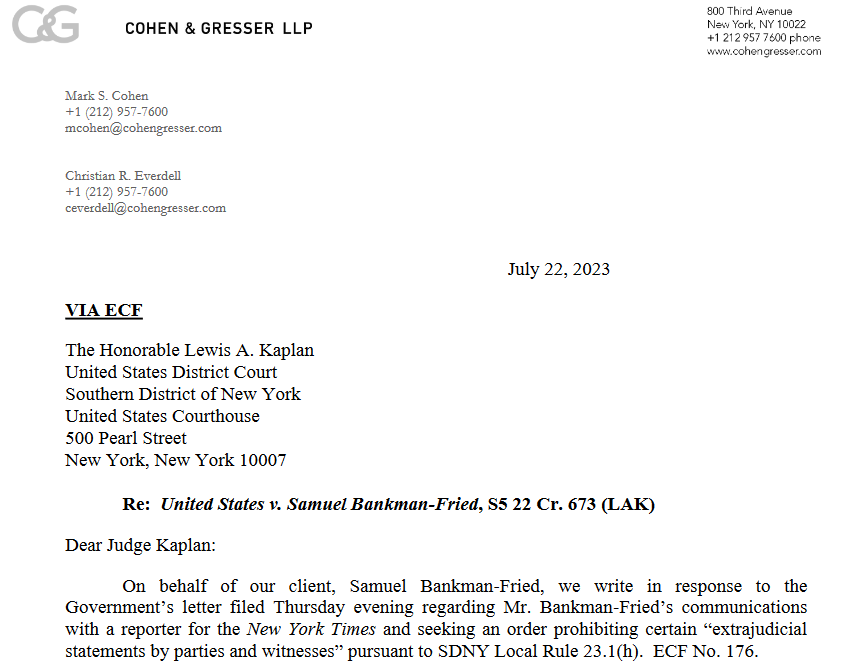
However, in accepting the relief, Bankman-Fried’s lawyers also want the same gag order to be applied to all parties and witnesses that could be involved in his criminal trial.
“We respectfully request that any such relief, however, should apply not just to Mr. Bankman-Fried, but equally to all ‘parties and witnesses’ — namely, the Government and all potential witnesses in this case.”
This would include the U.S. government, former employees of cryptocurrency exchange FTX, FTX Debtor entities, Alameda Research and other potential witnesses involved in the case, according to the attorneys.
Explaining the request, the lawyers said there has been a “toxic media environment” surrounding their client since the collapse of the exchange, noting that FTX CEO John Ray was one of the bigger culprits.
“Most notably, the current CEO of the FTX Debtor entities, John J. Ray III, who has routinely (and gratuitously) attacked and vilified Mr. Bankman-Fried in his public comments and filings in the FTX bankruptcy proceedings,” they said.
“Mr. Ray’s repeated ad hominem attacks on Mr. Bankman-Fried — which have very little [to] do with his role recovering assets for FTX creditors and seem more directed towards publicly vilifying Mr. Bankman-Fried. [This] has left Mr. Bankman-Fried with little choice but to respond,” the lawyers added.
Related: Sam Bankman-Fried’s brother planned to buy island and prep for apocalypse: court filing
The law firm argued that the U.S. government was applying a double standard by touting several articles that sought to harm SBF’s reputation. This formed the basis of their request for the same gag order for SBF.
SBF pleaded not guilty to a series of fraud charges for the alleged role he played leading to the bankruptcy of FTX. The trial for SBF’s fraud charges begins on October 3.
Collect this article as an NFT to preserve this moment in history and show your support for independent journalism in the crypto space.
Magazine: Web3 Gamer: ‘Ethical’ SBF game axed, Web3 games sign-up process sucks, Tomb Chaser

